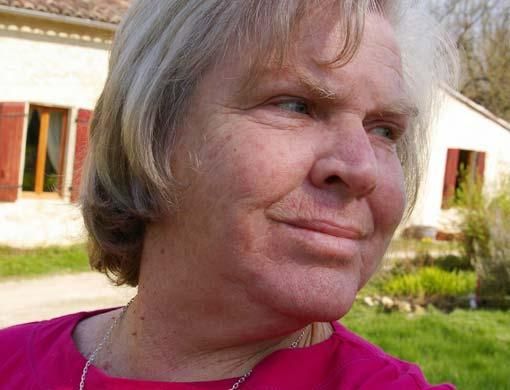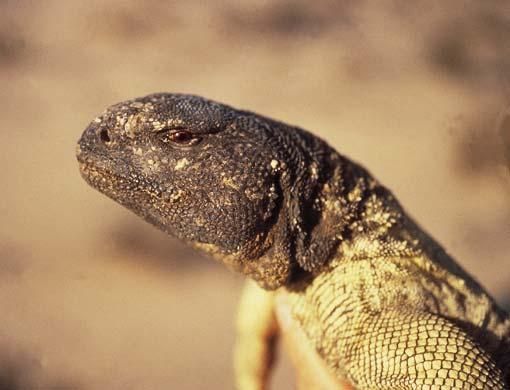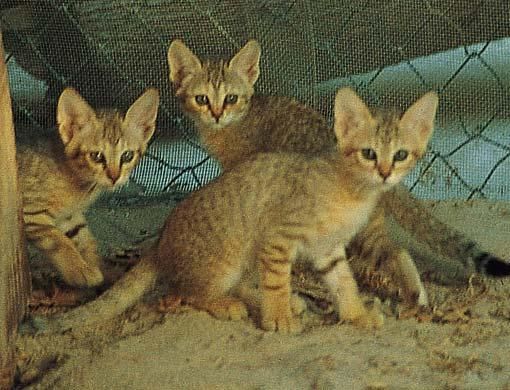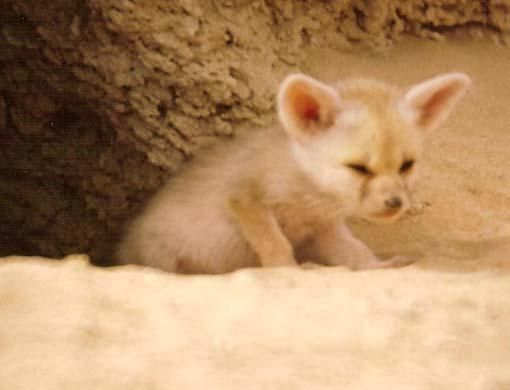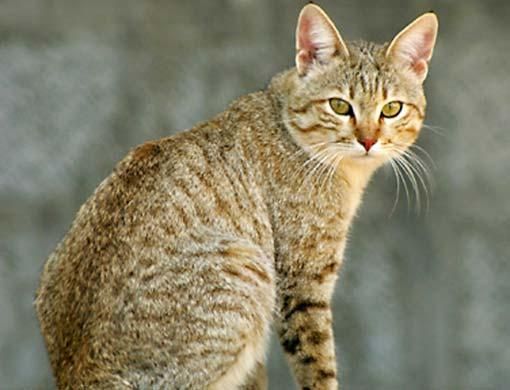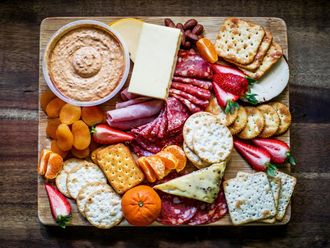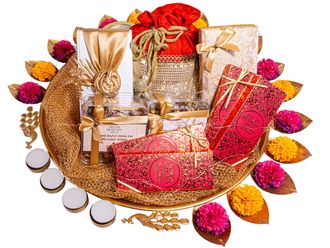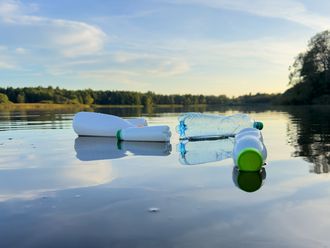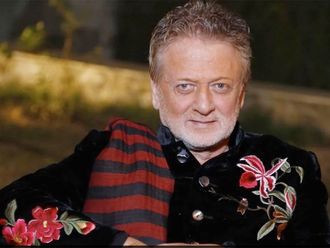Animals are different from people. For one thing, they do not hate. Even when they have been treated badly, they do not hate, says Arabian Leopard Trust founder and wildlife and nature enthusiast Marijcke Jongbloed. So shouldn't we humans treat them with a little more love? she asks Andrew Van Smeerdijk
For those passionate about wildlife in the UAE, the name Marijcke Jongbloed is synonymous with nature conservation. Indeed when you browse through her list of achievements, you could be forgiven for thinking that she was a zoologist or botanist, not a general practitioner.
A Dutch doctor-turned-nature writer, Jongbloed is the founder of the Arabian Leopard Trust (ALT) - one of the first organisations in the region dedicated to wildlife preservation.
Having explored the UAE desert for two decades, she has since written numerous books on the flora, fauna and ecology of the region, including The Living Desert and The Green Guide to The UAE.
But they're not the only feathers in her cap. As a director of the Sharjah Natural History Museum and Wildflower Gardens, she promoted the cause of threatened species in the UAE.
Despite this daunting resume, Jongbloed is no cold, distanced scientist. If anything she is a passionate animal lover. She believes animals have emotions and are only aggressive when they feel threatened.
While living in Al Ain, Sharjah and Dubai for two decades, she welcomed hedgehogs, wild cats and countless other critters into her home. In short, she's 'wild' about conservation. And respected by her fellow wildlife lovers.
"Marijcke Jongbloed will always be associated with a love for the wildlife and the natural environment of the UAE," says Gary R. Feulner, chairman of the Dubai Natural History Group.
"She remains by far the most prolific author for the general public on UAE natural history and conservation issues."
Despite having left the country somewhat quietly in 2003, the leopard lady hasn't changed her spots.
"I am now living in the Gironde, just east of Bordeaux - a really pretty part of France," she tells Friday via e-mail.
"I have a small restored farm with four hectares of my own wild Europe around me. I have a badger set 100 metres away; I have koipu in my river, fire salamanders in my freshwater spring and a garden full of fruit and flowers to keep me busy. I go on long walks through the neighbourhood, take part in village activities, take my camera everywhere and write, write, write."
And it's in her writing that her message resonates.
"People will not conserve what they are not aware of. And with awareness and acknowledgement comes, inevitably, a certain respect," says Feulner.
"It was, I think, a Japanese conservationist who said, 'Even a small child will not step on a plant if he knows the name of it.' Marijcke tried her best to build on this principle by introducing the plants and animals of the UAE to the widest possible audience."
* * *
Jongbloed, 62, was born in Indonesia during the Second World War, when it was a Dutch colony. She became a medical practitioner and ran a private practice in Amsterdam before coming to the Gulf and working in Saudi Arabia.
In 1983, she moved to the UAE and started work in the Tawam Hospital in Al Ain. It was there that she got her first real taste of Arabian nature - not in the wild, but in the hospital's housing compound.
"I've always been interested in nature, but had not expected to see a lot in the desert," she says.
"One day when I was jogging around the compound, I saw what I thought was a tennis ball lying by the side of the road. When I went to pick it up, it turned out to be the fruit of the desert squash.
"And while I was bent over, I saw a flowering grass with such a lovely flower that I was immediately lost in love. Tennis went out the window and I spent practically the rest of my free time on all fours, photographing flowers and plants."
Although fascinated by the flora, she says there were no field guides available then.
"One small book with two dozen Omani plants, that's all.'' So she decided to do a series of articles on flora in the region for newspapers.
"I did this for several years ... That resulted in my book The Living Desert and after that it was just a matter of writing the books I wished were there for me to use."
"Her Living Desert, published in 1989, helped to reveal the extent of the interest that exists among UAE residents in the natural environment of the country,'' says Feulner. "Indeed, for some it was their first reminder that the UAE has a natural environment worthy of attention."
Her expeditions into the wadis and dunes formed the basis of another book on desert ecology, The Green Guide to the UAE. "I remember that one as almost a pregnancy - it took nine months to write, edit and publish, but, of course, I had already done all the trips and taken the pictures beforehand."
The 62-year-old says she learnt by mixing with fellow nature lovers. She joined the local natural history group, where she made some invaluable contacts.
"There were always people around who were good at some aspect of the natural world - archaeologists, marine scientists, butterfly experts ... I picked their brains and learnt as I went along. I made many silly mistakes in the beginning, but at least that caused people to react and show me up, which again brought nature to everyone's attention.
"With flora I was helped by Rob Western, a freelance botanist who worked in Abu Dhabi and gave the first slideshow on plants I saw at the natural history group in Al Ain. Later, my partner on my desert trips was zoologist Claus Mueller, a curator at Al Ain Zoo."
After three years, she moved to Dubai to work in a clinic. But her passion for nature didn't abate and her house became a refuge for animals.
Formation of the ALT
On her journeys into the desert, Jongbloed saw lots of birds, plants, reptiles and insects, but certainly no large carnivores. Then an acquaintance of hers told her about the presence of leopards in the region. Half the size of the African leopard, many considered the Arabian leopard extinct.
"Christian Gross (who later pioneered leopard capture and breeding in the UAE) told me about the leopards that were in the mountains. Hardly anyone believed him, but I did.
And then in 1986 two things happened: first a large male was killed in the summer and then in the fall three leopards were killed in a cave - they must have been a female and two young, for leopards are usually solitary.
"Not until another leopard was killed and strung up in 1993 did I realise that there might be a few more remaining. (That year,) a colleague at work showed me a picture of a freshly-killed leopard hanging from a rock.
"Suddenly, I felt that if there still were leopards around, something needed to be done. I (published) a piece in the papers asking for anyone interested in starting a campaign to save the Arabian leopard. There were a dozen or so reactions and with that small nucleus we started the campaign."
In 1993, she founded and chaired the ALT, a non-governmental organisation that aimed to raise public awareness about threats to the environment, especially those concerning big cats.
One of its long-term aims was to breed endangered species in captivity. The group also campaigned to protect biodiversity, not just charismatic species - such as leopards or foxes - she says.
"It is well nigh impossible to inspire people to love the centipede, yet it is as important to the balance of nature as is the cuddly desert fox,'' she says.
"When we started the ALT, the leopard was our flagship species, but we campaigned for all wildlife and for habitat conservation. You always need a flagship species for people to identify with. Later in the (Sharjah) Desert Park, we were able to show kids the smaller animals, let them handle a jird or a sand racing snake."
"The ALT is perhaps still one of the best known NGOs in the UAE, despite the fact that it ceased its work some five years ago," says Feulner. "Many of its efforts are now being carried on under government auspices, taking advantage of superior funding, organisation and manpower."
The group scoured the countryside, asking farmers about the whereabouts of leopards and caracals (smaller, lynx-like cats) and conducting education and clean-up campaigns.
Wild cats were brought into captivity and mated. Then in 1995, a leopard was rescued from Yemen and brought to the UAE and later mated with two female leopards on loan from a breeding group in Oman.
"Marijcke and many, many volunteers of all ages and from all walks of life were tireless in their efforts (bazaars, can collections, etc) to raise awareness and money for projects to set aside protected reserves and to establish captive breeding of endangered species," says Feulner.
To raise funds for the ALT, Jongbloed wrote, illustrated and co-authored Denis, the Dugong; Hayat, the Arabian leopard; Sophie, the Sandfox and Yawi the Wildcat. All contain strong environmental messages for young readers.
Birth of the Sharjah Desert Park
"In the early 1990s, someone told me about a colony of spiny-tailed agamas on both sides of intersection 8 of the Sharjah-Dhaid highway. I often went to observe these interesting little 'dragons' and one day I found horrible snares lying at the entrance of half a dozen burrows …''
So upset was she by this, that she dashed off letters to the authorities concerned pleading that a nature reserve especially for dhubs be set up. Her campaign was successful and resulted in the setting up of the Sharjah Desert Park.
Then in 1995, after 25 years working as a doctor, she switched careers and became the second director of the Sharjah Natural History Museum.
Her work for the environment in the UAE was recognised in 1996 when she received the Shaikh Mubarak Award for Natural History.In 2003, she moved back to France - the same year the ALT was disbanded.
Animal house
While in the UAE, Jongbloed played host to a number of creatures. In fact, the book she is currently working on, Fat Legs Don't Matter, tells the stories of the animals she had in her house and garden.
"I had a wonderful secluded house and large garden in Al Bada'a', near Satwa. It was a home for many animals, one of the most memorable being Charlie the hedgehog. His mother died of heatstroke when he was only a few days old and I hand-reared him.
"He was a most inquisitive, funny creature that gave me much joy, until he too died of heatstroke when he was about 5. It seemed strange to me that desert animals would die of heatstroke, even when they had adequate shade and shelter.
"The summer in which Charlie died was particularly hot and many of the Sharjah Breeding Centre hedgehogs also died.
"Raising Gordon's wild cats with the bottle was also a wonderful, if tiring, experience. They were loads of fun and naughtier than any domestic cat I have ever known. They were tame for me but not for anyone else.
"I personally never captured any animals. We only took the first three wild cats for the breeding programme from the desert, of which one escaped and became a city cat, although I saw it many years later in my backyard again! All the other animals we had were rescuees."
A special place
Of the animals she looked after, Adrian the saluki (Arabian hunting dog) has a special place in her heart.
"Adrian walked into my life and house from the desert and was accepted by my three other pets immediately, probably because he was on the point of starvation. He was the most amazing dog I have ever had, with the character of a prince. Unfortunately, his death 18 months later was a tragic blow.
"He was shot while on our daily walk - I think by people who wanted him but could not catch him. I only had him for a year and a half and will never forget him.
"My favourite area in the UAE is an area near Al Maha, where the mountains meet the sands. My beloved saluki Adrian lies buried there. It is beautiful and peaceful and I hope it stays that way.
Most memorable
In terms of wildlife sightings, Jongbloed's most memorable moment in the wild forms part of her new book.
"A friend … told me that he had seen Ruppell's sand foxes in the wild - I begged him to show where he had seen them and we set out on a trip skirting the edge of the Rub Al Kahli desert."
Looking ahead
In terms of the future of conservation in the UAE, Jongbloed views captive breeding as a success. However, she feels that an increase in the number of wild animals is currently only likely in the Dubai Desert Conservation Reserve (DDCR).
"The only place where some (animals may increase in number) ... is in the enlarged Al Maha Resort (which is part of the DDCR)."
She thinks there's one primary answer to the issue of conservation: education, of both adults and children.
"People practically everywhere still need to learn about conservation. The only way to do it, I feel, is to let them experience nature at close quarters.
"Teach a kid not to throw garbage around, and (he) will acquire a lifelong habit to put garbage in its proper place.
"Teach a kid that animals experience pain, loneliness and unhappiness and they will remember. Show them how animals can be happy and content and they will look for ways to accommodate whatever animal comes their way."
Like any wildlife warrior, there have been times when Jongbloed has lost hope, only to have it rekindled by the inspiration of others.
"I once had the privilege of hearing Jane Goodall give a lecture in Dubai and I was amazed at her optimism and courage," she says.
Missing the UAE
While content in rural France, Jongbloed misses many aspects of the UAE.
"I miss sunrise over the red sand dunes with sparkling dew on the grasses, snorkelling and watching dolphins play near the Musandam (peninsula), going for wadi walks with my friend Minie, having my Sri Lankan and Indian friends around the house helping me, shawarma and falafel, sunshine year-round and glorious heat."
According to Feulner, many of her friends are in regular contact with her - not to mention naturalists needing her advice.
"She is still consulted by UAE naturalists concerning news and developments, particularly the expert identification of odd plants from time to time!"
And as much as Jongbloed misses the UAE, one thing's for sure: the eco-lovers miss her too.


